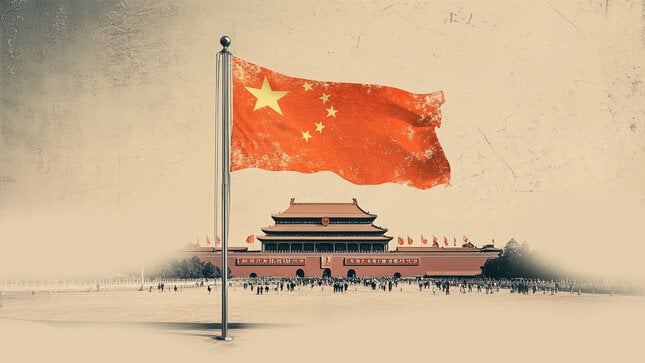USD/INR gains traction as India and Pakistan tension escalates
- Indian Rupee softens in Wednesday’s early European trading hours.
- Heightened tensions between India and Pakistan weigh on the INR.
- Traders await the US ADP Employment Change, PCE inflation and flash Q1 GDP report later on Wednesday.
The Indian Rupee (INR) weakens on Wednesday, pressured by rising geopolitical tensions between India and Pakistan. Many tourist sites in Kashmir have been closed since Tuesday, as traders react to unverified reports of military activity.
Nonetheless, positive domestic markets and a decline in crude oil prices might help limit the INR’s losses. Foreign investors have stepped up buying of Indian stocks over the last week, a reversal from the selling pressure witnessed earlier in the month.
Looking ahead, traders will keep an eye on the US ADP Employment Change, which is due later on Wednesday. Also, the Personal Consumption Expenditures Price Index (PCE) and the preliminary reading of Q1 Gross Domestic Product (GDP) will be published. On Friday, all eyes will be on the US April Nonfarm Payrolls (NFP) report.
Indian Rupee edges lower as tensions between India and Pakistan escalate
- Pakistan’s minister for information and broadcasting said Islamabad has “credible intelligence” that India intends to launch a military strike within the next 24 to 36 hours, per Aljazeera.
- “While sentiment is slightly positive for the rupee given the pick up in portfolio inflows, geopolitical flare-ups remain a risk for the currency”, said Dilip Parmar, a forex research analyst at HDFC Securities.
- Pakistan’s defence minister stated on Monday that a military incursion by neighboring India was imminent in the aftermath of a deadly militant attack on tourists in Kashmir last week, per Reuters.
- US Treasury Secretary Scott Bessent said on Monday that many top trading partners of the US had made 'very good' proposals to avert US tariffs, and one of the first deals to be signed would likely be with India.
- US job openings fell to 7.19 million in March, the lowest since September 2024, compared to a revised 7.48 million in February, according to the US Bureau of Labor Statistics on Tuesday. This figure came in below the market consensus of 7.5 million.
- The US Conference Board’s Consumer Confidence Index declined to 86.0 in April from 93.9 in March (revised from 92.9). This figure registered the lowest level since April 2020.
- The possibility of a rate cut from the US Federal Reserve (Fed) jumped to 56.8% as weaker-than-expected labor and sentiment data increased concerns about economic momentum.
USD/INR sticks to negative bias under the 100-day EMA
The Indian Rupee trades on a weaker note on the day. The bearish bias of the USD/INR remains in place, characterized by the price holding below the key 100-day Exponential Moving Average (EMA) on the daily timeframe. Furthermore, the bearish momentum is reinforced by the 14-day Relative Strength Index (RSI), which is located below the midline near 39.70.
A breach of the lower limit of the descending trend channel of 84.70 could attract selling interest enough to put the pair toward 84.22, the low of November 25, 2024. Extended losses could see a drop to 84.08, the low of November 6, 2024.
On the bright side, the key upside barrier for the pair is seen at 85.78, the 100-day EMA. Sustained trading above the mentioned level could suggest that a major reversal is in the works and pave the way to 86.35, the upper boundary of the trend channel.
RBI FAQs
The role of the Reserve Bank of India (RBI), in its own words, is "..to maintain price stability while keeping in mind the objective of growth.” This involves maintaining the inflation rate at a stable 4% level primarily using the tool of interest rates. The RBI also maintains the exchange rate at a level that will not cause excess volatility and problems for exporters and importers, since India’s economy is heavily reliant on foreign trade, especially Oil.
The RBI formally meets at six bi-monthly meetings a year to discuss its monetary policy and, if necessary, adjust interest rates. When inflation is too high (above its 4% target), the RBI will normally raise interest rates to deter borrowing and spending, which can support the Rupee (INR). If inflation falls too far below target, the RBI might cut rates to encourage more lending, which can be negative for INR.
Due to the importance of trade to the economy, the Reserve Bank of India (RBI) actively intervenes in FX markets to maintain the exchange rate within a limited range. It does this to ensure Indian importers and exporters are not exposed to unnecessary currency risk during periods of FX volatility. The RBI buys and sells Rupees in the spot market at key levels, and uses derivatives to hedge its positions.
Forex News
Keep up with the financial markets, know what's happening and what is affecting the markets with our latest market updates. Analyze market movers, trends and build your trading strategies accordingly.

















